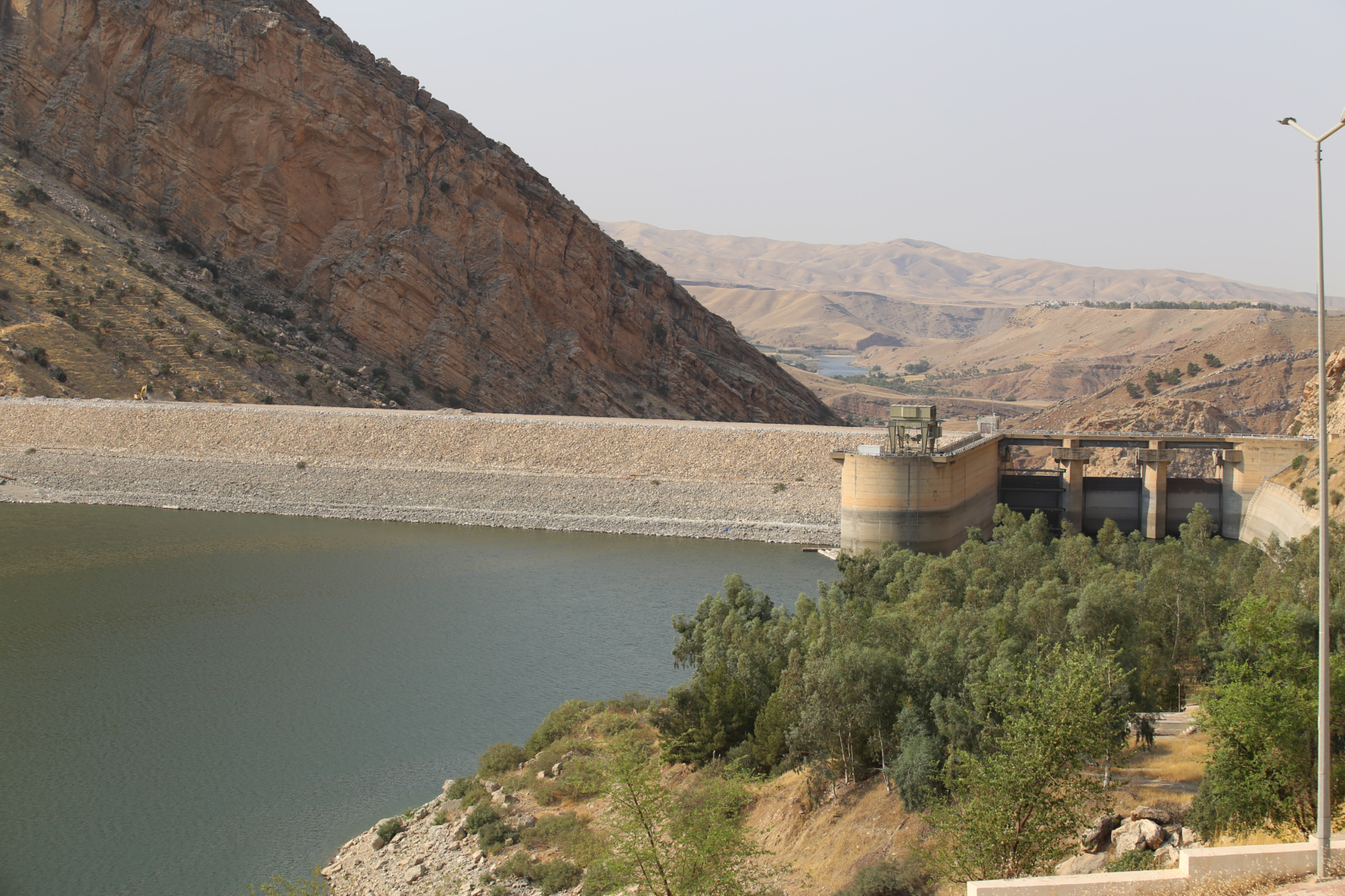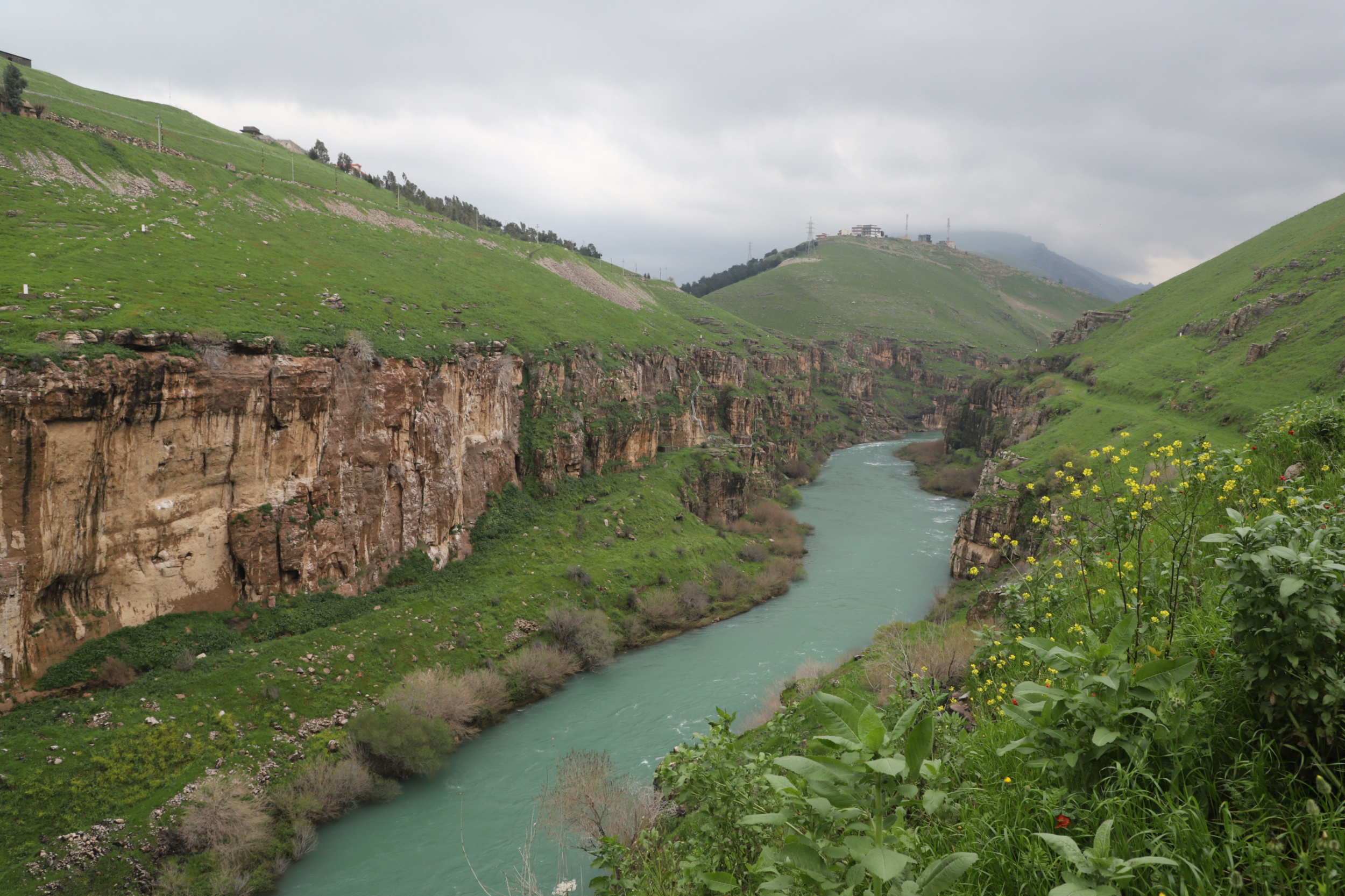Iraqi Kurdistan faces water 'catastrophe' as Iran cuts off rivers
Iraqi Kurdistan has suffered its fair share of water crises over the decades, but experts warn that a catastrophe is now looming large as Iran blocks major water supplies from the region’s two main rivers - the primary sources of livelihood for nearly two million people.
The Sirwan and Little Zab rivers are crucial sources for the two major dams in the region, Darbandikhan and Dukan, and if Iran continues limiting the water flow into Iraq, the consequences will be disastrous for the people and the environment, Darbandikhan's director Rahman Khani told Middle East Eye.
Iran has been reducing the flow of water to Iraq over the past three years, resulting in agricultural damage and water shortages. But last month Iraqi officials warned that flows coming from northwestern Iran into Sirwan and Little Zab had significantly dropped.
Khani said that nearly two million people depended on the rivers that flow through Halabja, Sulaymaniyah, Garmiyan district and Diyala province for agriculture, fishing projects, drinking water, tourism and power production.
Stay informed with MEE's newsletters
Sign up to get the latest alerts, insights and analysis, starting with Turkey Unpacked
“In a couple of years, Iran’s dams projects will not only create a catastrophe that will force people to migrate to other places, but will also have an impact on farmland, wildlife and tourism,” Khani said.
“What continues life here is opening the reserved water in the dam,” he said, cautioning that they could not continue to flow water from their reservoir for too long.
Water levels
According to Khani, water levels in the Darbandikhan dam were decreasing at a rate of 15cm daily and the water was six metres lower than the same period last year, with Iran limiting the flow by 75 to 80 percent last month.
The Darbandikhan dam is located 65km southeast of Sulaymaniyah and is constructed on the Sirwan river, which springs from the Zagros Mountains in Iran and ends in the Tigris river, southeast of Baghdad. The dam has a capacity to contain three million cubic metres and is used for irrigation, flood control, hydroelectric power production and recreation.
The low water level is primarily due to the 16 dams Iran has constructed on the Sirwan, with the biggest being the Daryan dam in Kermanshah province, completed in 2018 and located 28km from the Iraqi border.
A research paper conducted by the Save the Tigris campaign in 2016 highlighted the potential threats that the Daryan, which can contain 340 million cubic metres of water, would pose to the region and to Iraq as a whole.
The Iranian government said that the purpose of these dams is to produce hydroelectric power and aid irrigation in the country’s southwest.
Last year, Iran's Water Resources Management Company announced its intention to construct 109 new dams under a plan that extended through to the year 2021.
But what was more concerning for Kurdish officials in the region was the 47km-long Nawsud water tunnel associated with the dam, whose main purpose was to divert the water from the river to some Iranian cities.
“Nawsud will have a huge impact on Halabja province. We will be losing 100 percent of drinking water and it will also create a big obstacle for agriculture and fishing resources,” the deputy governor of Halabja, Kawa Ali, told MEE.
He added that cutting off the water supply was going to create political and social issues, as residents of the Iraqi city “will lose trust in Iran, which they saw as a saviour during the chemical attack on the city in 1988” by former dictator Saddam Hussein’s regime.
Nawsud, located just 10km west of the Daryan dam, diverts the Sirwan river to Kermanshah, Zahaw and Qasr-e Shirin in Iran. Its natural pathway is through Darbandikhan and on into the Tigris river in Iraq.
“On 13 August, Iran started operating Nawsud, which has the capacity to completely redirect the river in the drought seasons,” said Khan.
“No international law permits the diversion of natural resources between countries.”
Iran’s strategy towards cutting off water had the potential to change the ecosystem of the whole region, warned Rozhan Faraidoon, manager of the Earth Network, a nongovernmental organisation based in Sulaymaniyah.
“Biodiversity in the region will be disastrously damaged and wildlife is going to perish eventually”, Faraidoon said.
“If this strategy continues another problem would arise: a fresh campaign to dig wells would restart by locals, which would ultimately affect the ecosystem.”
Expected damages
On the banks of Sirwan river, residents of Zhalanaw, a village 4km south of Darbandikhan, started small tourist projects and an amusement park this year.
One of the residents is Salah Dara, who had spent $20,000 on his project but now fears his investment would be of no use should the Iranian government continue blocking the river.
“If the Sirwan river decreases due to Iran’s restrictions, my whole investment is going to waste as tourists will be reluctant to come here,” Dara said.
He added that he and his fellow villagers were fairly dependent on the river for growing rice, which needs a lot of water until it’s fully produced.
'Nearly 100,000 people are dependent on the river, so a large number of farmers will bear the brunt of the impact'
-Akram Ahmed, director
of dams and water reserves
Little Zab also originates from Iran’s Zagros Mountains and runs through Dukan, a town 70km from Sulaymaniyah, and then joins the Tigris.
The Dukan dam, containing four billion cubic metres, is also built on the river whose flow has completely been cut, Kurdish news agency Rudaw reported.
“Nearly 100,000 people are dependent on the river, so a large number of farmers will bear the brunt of the impact,” Akram Ahmed, director of dams and water reserves in the Kurdistan Regional Government (KRG), told MEE.
The official added that Qalat Daza and Raniya, the two biggest towns in Sulaymaniyah, were going to be affected in terms of drinking water and the loss of a large quantity of fish resources.
According to Rudaw, 750 acres of farmland in Sulaymaniyah’s Pishdar region, along with 400 fishing projects, faced an imminent threat should the decrease of flow persist.
To make matters worse, Iran has suggested to Halabja officials that they were willing to sell electricity to the province, which it produced from the Sirwan river after its diversion to its own cities.
“In return for cutting off the river, the Iranian government, through its Kermanshah governorate, has offered to sell us electricity at a lower price but we have not accepted as it’s not in our authority to agree to such a deal,” said Ali.
A decades-old issue
The KRG and Iraqi governments have both issued statements calling on Iran to stop blocking the water flow, an act that was “contrary to all international norms and laws and the water from the shared rivers is the property of the people of Iraq and Iran”.
The KRG had also tried to reach out to the Iranian government through its consulate in Erbil.
“We’ve summoned Iran’s general consul in Erbil through the Ministry of Agriculture and Water Resources to complain about the issue and are awaiting Tehran's response,” said Ahmed.
However, these kinds of actions would likely be to no avail as Iran was “very determined on operating its long-awaited projects and KRG officials have failed to realise the magnitude of the issue for more than two decades”, explained Faraidoon.
She also said that her organisation, along with other international NGOs, protested against Iran’s action over the previous years as natural resources should be “shared and there has to be an understanding between countries to distribute them”.
But when it comes to this issue, she said, Iran had repeatedly “disregarded international laws”.
Middle East Eye delivers independent and unrivalled coverage and analysis of the Middle East, North Africa and beyond. To learn more about republishing this content and the associated fees, please fill out this form. More about MEE can be found here.








